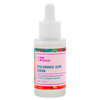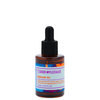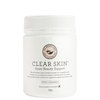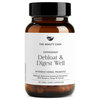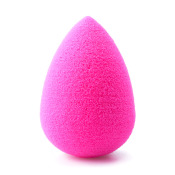![[Photo: ©Treasures & Travels/ Stocksy] [Photo: ©Treasures & Travels/ Stocksy]](https://dy6g3i6a1660s.cloudfront.net/pHd_62KLE_GFcsKXIDFKBAPUAlg/orig.jpg)
Out of all the poor life choices you can make during the summer, getting a sunburn always feels the most shameful. Maybe it’s because the importance of wearing sunscreen has been drilled into my head from every possible direction (parents, friends, doctors, internet strangers, you name it) and I really, really should have known better. Maybe it’s the knowledge that I could be paying for that extra 30 minutes of sun in dark spots, wrinkles—even skin cancer. Or maybe it’s because I’ll have to walk into the office on Monday morning with patchy, cakey makeup that I tried (and failed) to apply over my sunburn.
Listen, I’m not here to make you feel guilty about getting sunburned (okay, maybe a little bit). I’ve been there more times than I’d like to admit, and along the way I’ve picked up a few tricks for makeup that actually disguises the redness and flaky, peeling skin. Below, how to apply makeup to your sunburn—even when your skin is evacuating your face in sheets.
(Writer’s note: In researching this article, I came across a lot of claims that you shouldn’t wear makeup over a sunburn because your skin needs to “breathe.” While skin doesn’t actually breathe—pores don’t have tiny lungs—I can see the benefit in reducing the number of possible irritants you put on damaged skin. With that in mind, it’s probably best to skip makeup for as long as you can while your sunburn heals. However, if you have an important event or a job interview and want to wear makeup, read on.)
 Start with a simple, healing skincare routine
Start with a simple, healing skincare routine
Before you even think about picking up your concealer, focus on healing and hydrating your damaged skin with a simple routine. Start by cleansing with a ridiculously gentle, non-foaming cleanser (Pai Skincare Camellia & Rose Gentle Hydrating Cleanser is a personal favorite). Next, mist your skin with a gentle, alcohol-free face mist (plain rosewater works too). Then, apply a thin layer of aloe vera gel (straight from the plant if you can get it), which helps soothe sun damage. Apply a nourishing moisturizer with skin-identical ingredients (aka ingredients that mimic your skin’s natural lipid barrier), like ceramides, squalane, and phospholipids. And, just in case it’s not obvious, finish with a good broad-spectrum sunscreen.
 Gently exfoliate flaky skin
Gently exfoliate flaky skin
If your sunburn has reached the peeling stage (i.e., you’re past the point where your skin feels painful and/or hot to the touch), you can use gentle physical exfoliation to create a smooth canvas for your makeup. To loosen any flakes that your makeup can cling to, exfoliate with a damp washcloth or konjac sponge using very light pressure. Stay away from scrubs and chemical exfoliants until your skin heals completely—the most important part of any post-sunburn skincare routine is repairing your skin.
 Use a green color corrector
Use a green color corrector
The color wheel tells us that green cancels out red, so if your skin is a startling shade of crimson, applying a green color corrector will help neutralize some of that surface redness. Since sunburns usually cover large areas of skin, it’s best to opt for a formula that you can spread across your entire face, such as a color-correcting primer. You can also add a few drops of a liquid or cream green color corrector (like this one from Make-Up Atelier) into your moisturizer for an all-over redness-reducing tint.
 Mix a drop of oil into your foundation
Mix a drop of oil into your foundation
Applying foundation to sunburned skin often leads to a patchy, splotchy finish as pigment cakes to flakes and uneven texture. Try mixing a drop of face oil into your foundation before applying. The oil moisturizes dry, damaged skin while adding emollient properties to help your foundation spread smoothly.
 Use a makeup sponge or extra-soft brush
Use a makeup sponge or extra-soft brush
When you drag a makeup brush across your skin, the bristles cause microexfoliation—that is, they loosen dead skin cells. Especially noticeable on dry or damaged skin, microexfoliation can cause flakiness and cakey, patchy makeup. Try applying your makeup with a damp beautyblender or makeup sponge in a gentle bouncing motion to minimize microexfoliation. For powder foundation, blush, or bronzer, opt for an extra-soft makeup brush that will deposit product without disturbing dry flakes, like Wayne Goss The Air-Brush.
Featured Products
-

Wayne Goss
The Air-Brush
/ 325
You Might Also Like
-
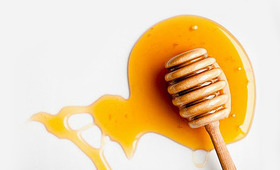
DIY
DIY Edible Beauty Remedies
- 1682
-
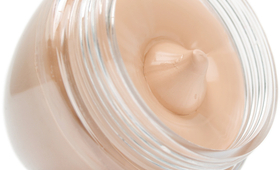
Cream Foundation
Fiona Stiles on Foundation Part 3: Creams
- 184
-

Hair
3 Ways to Keep Your Hair Static Free
- 110
-

Products
Back To School Survival Kit
- 1918
-
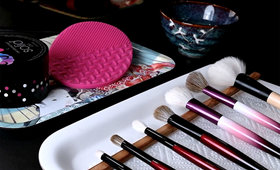
Makeup Brushes
The Definitive Guide on How To Clean Your Brushes
- 3
-
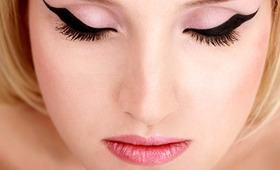
Makeup Brushes
Which Eye Liner Brush Is Right for You?
- 1920
-
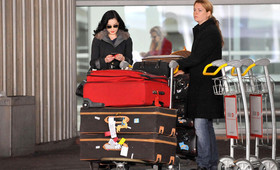
Beautylish Recommends
Spring Storage Solutions Part 4: On-The-Go Beauty
- 91
-
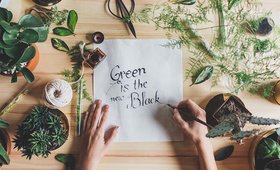
Eco Beauty
How to Make Your Beauty Routine More Eco-Friendly
- 2






